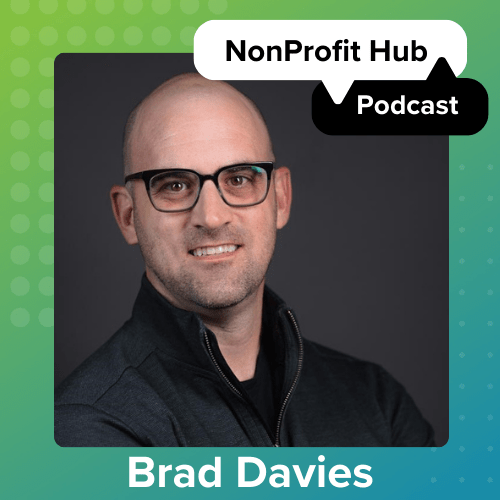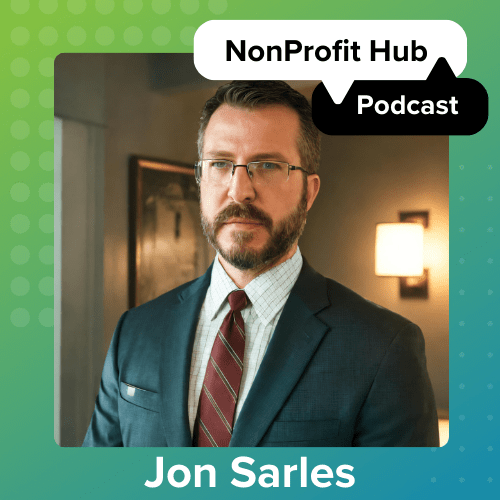It’s no secret that running a nonprofit is difficult, challenging work. No matter how many regular donors you have, for many executive directors, there’s no guarantee that from month to month your revenue will be enough to further your mission. Costs fluctuate. Pledged funds fall through. Office roofs spring leaks. Nonprofit budget deficits happen.
No matter how well you plan and budget in your nonprofit, you cannot plan for everything. Budgeting perfectly is next to impossible. Some months will end with a surplus while others leave you staring down a bright-red deficit.
Knowing how to deal with a nonprofit budget deficit, rebound, and prevent them from recurring in the future can mean the difference between calling it quits and pushing your mission’s impact to the next level.
Take Action: What to Do When Your Organization Suffers Nonprofit Budget Deficits
Determine the Type of Deficit
If you find your bottom line in the red, the first step you should take is to look more closely. Figure out why and how you have a deficit. Understanding the type of deficit you have will help you determine how to effectively address it.
Three common types of nonprofit deficits include:
1. One-Time Deficit
This type of deficit happens as a result of an expensive, one-time problem that’s not likely to recur. For instance, a one-time deficit would be one that occurs as a result of pipes springing a leak and your office flooring needing to be replaced. An unexpected expense like this could cause a budget deficit because you didn’t budget for it to happen. Thus, it may expose the need for an emergency fund. Remember that one-time deficits don’t usually indicate systemic problems in your nonprofit’s finances and can typically be resolved quickly.
2. Recurring Deficit
A recurring deficit is any repeated deficit in your budget, whether you’re looking at your organization as a whole or at an individual event. This type of deficit indicates a weakness in your organization, your operational strategy, and your budgeting. Recurring deficits are a symptom of a bigger problem and should be addressed with operational and strategic improvements. They’re also one of the many reasons why you should review your budget forecast quarterly.
3. Residual Deficit
A residual deficit refers to a loss that lingers through a longer-than-ideal recovery period. Significant deficits from which your organization needs time to recover therefore result in residual deficits. They can occur either as a result of one-time deficits or recurring deficits. No matter the cause of a residual deficit, they should be addressed and resolved as quickly as possible. Any lingering deficit weakens your organization financially, leaving you vulnerable to even the smallest hiccups in operations, productivity lags, or cost fluctuations.
Find An Immediate Fix for Your Nonprofit Budget Deficit
Since residual deficits weaken your nonprofit, finding a solution to the immediate problem that will resolve your deficit is important to ensure your organization recovers.
Before approaching your board with the problem, do some of your own research. Explore potential solutions and talk with a trusted advisor. It’s helpful to get a fresh perspective and another set of ideas.
Three quick and popular strategies for immediate action include:
Re-Allocating Core Funds: Look over your current budget for expenses to see if there are any costs that are not absolutely essential. If you find non-essential expenses in the budget, eliminate them for now to cover your deficit. Just be sure you’re only considering expenses within your core funds and not cutting costs that will only free up restricted funds.
Considering a Loan or Line of Credit: If you run into a significant one-time expense or a recurring cost that thrusts your organization into a deficit, you can consider covering these expenses using a loan or line of credit from a lender at a bank or credit union. These solutions, however, must be carefully considered. They come with their own expenses (origination fees and interest) and add a monthly payment to your list of ongoing expenses.
Holding a Special Fundraiser: When your nonprofit’s in a pinch, don’t be afraid to call on those who have supported you in the past with a special fundraiser. You might be surprised how many people and businesses are willing to step up to help you continue furthering your cause.
Solve Your Operational Strategy for Long-Term Recovery
No matter the type of deficit your nonprofit suffers, you need to find and revise your operating strategy. Make sure you have a long-term solution to avoid future deficits. A long-term recovery plan might include the restructuring of your organization, operational adjustments, changes to your fundraising events, and/or budgeting for the creation of an emergency fund.
Keep Morale High and Culture Positive
When the times are financially tough, don’t allow them to also become emotionally tough. There’s nothing worse than letting a budget deficit send your morale into a downward spiral. Keep your spirits high, reassure your staff to maintain their confidence, and use the deficit challenge as a team-building event that bonds you and your staff closer together.
While these are great reactive steps to take after you realize your nonprofit has hit a budget deficit, the more important thing to focus on is: How do I make sure this doesn’t happen again?
6 Ways a High-Powered Back Office Can Keep Your Nonprofit Budget on Track
Luckily, there are ways to help mitigate the risk of your nonprofit experiencing budget deficits. And it starts with getting your back office in order. Data optimization is key to making sure your nonprofit stays on track. This can help you catch an issue before it’s too late.
Here are a few ways a powerful back office can help you avoid a budget deficit…
1. Know Your True Bottom Line
In a nonprofit, the bottom line doesn’t always reflect the money you actually have available to put toward your expenses. In nonprofits, funds are often restricted. Additionally, the lag between when you record funds and when you actually receive funds can create an artificially inflated bottom line. With a powerful back office, you’ll be better able to parse out your bottom line between restricted funds and core funds. You’ll also have a clearer picture of your current cash flow.
2. Allocate Indirect Costs for Reimbursement
If you have a deficit, take a close look at your contracts and grants with the federal government to check the spending rate. A strong back office can ensure you’re properly allocating your indirect expenses to these pools of restricted funds. Oversights or mistakes here can result in shorting yourself (and your budget) when it comes time for reimbursement.
Pro Tip: Properly allocating indirect costs can mean the difference between securing funding for the next year, quarter, or month from government grants, individual benefactors, and corporate donors. Efficient and accurate management reporting is critical in ensuring your financial arm has the ability to accurately track and report indirect cost allocation. Read more on how accurate reporting helped this nonprofit jumped from a $75,000/year grant to a $150,000/ year grant from the same foundation.
3. Identify and Cut Nonessential Costs
Comb through your expenses, looking to cut anything that is not absolutely essential to do your work. For example, you can go green and save on paper, ink, storage, and equipment costs by using digital forms and storing records in the cloud. Although community is often a very important aspect of the nonprofit structure, consider whether your organization could socially afford to decentralize your office. This type of change will eliminate one of your biggest overhead costs (after labor) to free up an enormous amount of cash.
4. Identify Your Most Impactful Activities
Despite the major revenue it generates, could your annual fundraising gala actually be costing you money? With a powerful back office, you’ll be able to look at each of your revenue channels (fundraisers, events, mailers, marketing campaigns, etc.) with respect to deficits and surpluses. By evaluating profit and loss statements by program, you can determine your most and least effective activities. Then you can focus on those that really make the biggest difference to your cause.
5. Improve Retention Rates
A high-functioning back office can help you stay in control of your retention rates. Replacing employees, volunteers, and donors are all incredibly expensive activities. The U.S. continues to face the ‘Great Resignation’ as 95% of American workers are thinking of quitting their job, according to a June 2021 survey from job site Monster.com. Lowering employee turnover should be a huge part of your human capital strategy. A strong back office helps you identify strategies to improve your retention rates all around.
6. Use Nonprofit Budget Surpluses Wisely
Once you’re free from budget deficits, meeting your budget, and even experiencing the occasional surplus, your back office can help you identify the wisest ways to reinvest your cash. You can make data-driven decisions to ramp up your most effective fundraising efforts. You could also try out a new fundraising campaign or tuck away the funds for a rainy day.
Unique Challenges + Going Forward
When you’re concerned about facing budget deficits, the last thing your nonprofit needs is another significant overhead expense. So, it might seem crazy to even consider building up your back office. However, considering the benefits of outsourcing, such as improved efficiency, accuracy, reporting, and reduced cost in comparison to building a full internal accounting back office, it may be worth it in the long run.
Nonprofits are harder to run than for-profits. I can say this with certainty having spent 35 years of experience running both. Nonprofits have intricate needs and face unique challenges that most accounting services don’t have experience in.
That’s why I created GrowthForce: to serve this overlooked group of nonprofits. I’ve single-handedly seen the difference it made when organizations used accounting as a fundraising tool. At GrowthForce, we specialize in nonprofit accounting and financial controller services. What makes our work meaningful is how we can help our clients help more people.
With a group of financial experts that deliver timely and accurate financials, (and virtually by your side to help you read, interpret, and understand your management reports), you can enter your future board meetings with the knowledge and confidence needed to help you bounce back from your nonprofit budget deficit and help you avoid them in the future.






